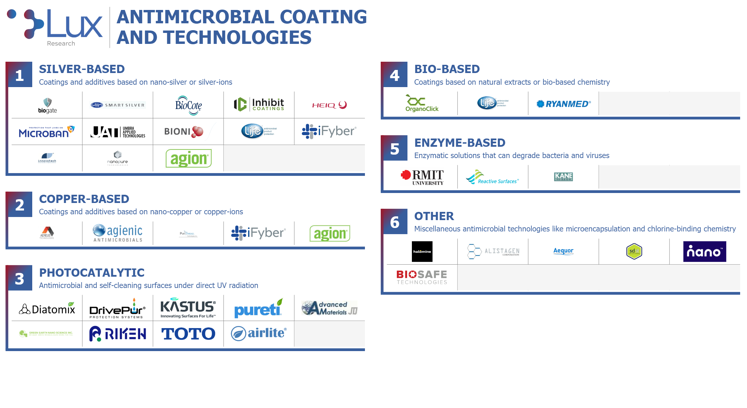by Brianna Crandall — December 18, 2020 — COVID-19 has drastically changed the perception of hygiene and cleanliness, spurring interest in antimicrobial coatings, according to a new report from Lux Research. These coatings previously struggled to find widespread adoption due to difficulties in quantifying their impact on human health, but the pandemic has drawn attention to them as an important safety measure. In its new report, Antimicrobial Coatings at the Front Line of COVID-19, Lux Research outlines key challenges and opportunities for coatings, additives, and materials innovation and how they will impact several major industries.
Tiffany Hua, research associate at Lux Research, stated:
COVID-19 has driven substantial interest in antimicrobial coatings this year and is proving to be a catalyst for antimicrobial research and funding. We expect this interest to spike even further before the end of 2020 and be a trend of continued interest in the materials and coatings industry.
According to the report, major manufacturers such as Ford Motor Company are talking about incorporating these types of coatings into their products, while startups like HeiQ bring out new antimicrobial coatings for applications like textiles.
However, not all antimicrobial coatings are created equal — some are only effective against bacteria and not necessarily viruses, so users need to choose carefully, points out the report.
“When considering the wide range of solutions used as preventive measures against COVID-19, it is important to understand the limitations of these technologies,” explained Hua. “Metallic antimicrobial agents such as silver and copper can be effective against both bacteria and viruses, but ensuring their effectiveness when dispersed in coating matrices still poses challenges.”
Other solutions such as photocatalytic, enzyme-based, and bio-based coatings have also been shown to be effective against bacteria and viruses.
Light-activated, photocatalytic coatings are on the rise, thanks to their self-cleaning functionality and effectiveness against viruses. These coatings use materials like nano-titanium dioxide (TiO2) that absorb ultraviolet (UV) light and produce reactive radicals that break down organic compounds and pollutants on surfaces.
“Photocatalytic coating developers have historically targeted the elimination of pollution and smog, but COVID-19 has driven more use in antimicrobial applications, as they can be effective against both bacteria and viruses,” noted Hua.
Bio-based antimicrobial technologies are also gaining attention, utilizing natural extracts and bio-based solutions to impart antimicrobial properties. Food packaging currently consumes the majority of bio-based antimicrobial technologies, but they could expand to other sectors as innovation continues to increase. Antimicrobial enzymes are another option, as some can also produce reactive oxygen species that kill bacteria under light and can produce longer-lasting antimicrobial coatings.
“Antimicrobial coatings are still far from perfect, as efficacy and durability are still major challenges,” concluded Hua. “These technologies lack certainty and documentation around performance while still struggling to prove that their incorporation leads to better health outcomes. Regulatory approval is another challenge, as new disinfectant and antimicrobial solutions must have EPA and FDA approval to make effectiveness claims. There are also health and environmental concerns that need to be addressed and have increased regulation and oversight. With a surge in research and funding, there will be less concern over performance and regulation.”
Lux Research expects major growth of antimicrobial coatings within the transportation and medical industries, as well as deployment in public spaces. Over the next two years, more opportunities will emerge within apparel, food, and packaging applications, while in the longer term, automotive original equipment manufacturers (OEMs) and other consumer product companies will adopt them.
For more specific information about the various types of antimicrobial coatings, Lux Research’s infographic is available to download from the website after filling out a brief form, or to view on the Coatings World website.
Lux Research also provides additional COVID-19 resources, news and research on its website.






